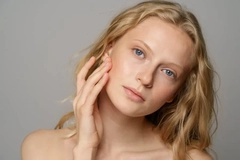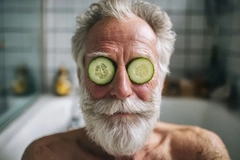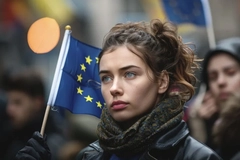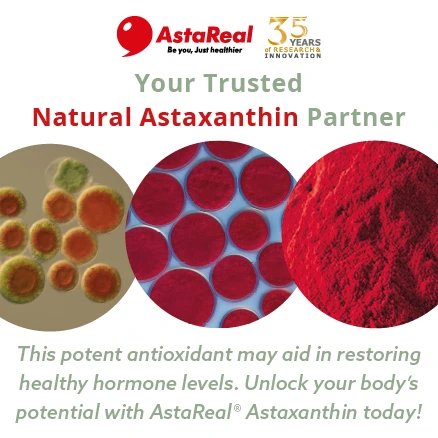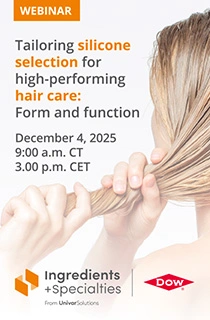Counterfeit cosmetics: OECD finds China leads market with unexpected flows in Morocco
The OECD has found that cosmetics from China dominate counterfeit trade, with a high influx to the EU and Morocco, signaling “unusual trade flows.” The OECD says the results from its Global Trade Report for 2020-2021 represent only a “fraction of the illicit cosmetics trade” and that the numbers are underestimated.
The most common counterfeit cosmetics include makeup, skin care, and perfumes. When duplicated, these fakes can cause serious health issues to users as they may contain high levels of toxins, bacteria, or other banned ingredients.
Piotr Stryszowski, author of the report and senior trade policy analyst for the trade and agriculture directorate at the OECD, and Morgane Gaudiau, an economist at the OECD, tell Personal Care Insights about the dangers the fake cosmetics may pose.
“Counterfeiters do not care about consumer health or safety — full stop. Their sole objective is profit. Any measure ensuring product safety usually involves additional costs that cut their margins. Since these operators already operate outside the law by violating intellectual property rights, they disregard health and safety regulations similarly,” says Stryszowski.
“There are no standards, no quality controls, and no accountability.”
 Morocco was ranked 10th globally as a recipient of counterfeit cosmetic products from China.Morocco raising questions
Morocco was ranked 10th globally as a recipient of counterfeit cosmetic products from China.Morocco raising questions
The report highlighted Morocco as an unusual recipient of counterfeit cosmetic products from China, ranking it 10th globally between 2020 and 2021.
“Firstly, we need to highlight that due to the clandestine nature of illicit trade, it’s challenging to distinguish between countries of origin [production] and transit. Consequently, we use the term ‘provenance economies’ to indicate both and to address this ambiguity,” explains Stryszowski.
He underlines that there is a lack of data explaining how Morocco climbed so high on the list, and the OECD would need to conduct deep research to understand it better.
However, Stryszowski shares an internal hypothesis that was not mentioned in the official report.
“We hypothesize that Morocco appears to be a transit point — counterfeit cosmetics come to Morocco in big shipments from China by sea (average shipment size exceeds 5,000 items) and leave in smaller consignments. Infringing luxury French, Italian, and American brands,” he says.
Stryszowski stresses that it is only a hypothesis, and the OECD does not have solid data to prove it.
The Netherlands ranks fourth on the list of “top provenance economies for the trade in counterfeit cosmetic goods.” Stryszowski says this is due to its role as a significant transit hub rather than a production source.
Stryszowski details: “The Netherlands’ advanced logistics infrastructure, notably the Port of Rotterdam and Schiphol Airport, facilitates the movement of goods into the EU. The Netherlands’ consistent presence in these rankings underscores its significance as an entry point for counterfeit goods into the EU. Counterfeiters take advantage of Dutch postal services by abusing them for smuggling of fakes from China to the EU.”
The European Commission recently warned of cosmetic products from China hitting an all-time high in its safety alert system, leading the governing body to issue a warning. Cosmetics accounted for the highest number of product alerts, and 40% of all personal care products came from China.
 Gaudiau says that available data still underrepresents the true scale of the problem of fake cosmetics. Unknown scale
Gaudiau says that available data still underrepresents the true scale of the problem of fake cosmetics. Unknown scale
Economist at the OECD, Gaudiau, adds that one critical point to emphasize is that the available data on counterfeit trade — even when based on rigorous seizure records and analysis as in the OECD report — still underrepresents the true scale of the problem.
“This is partly due to ‘localization’ strategies employed by counterfeiters, who increasingly operate in sophisticated, fragmented supply chains to evade detection,” she says.
Gaudiau explains that counterfeiters ship components separately, such as packaging, labels, or raw cosmetic ingredients rather than shipping the finished good to avoid raising customs suspicions.
“Later on, they conduct final assembly in the destination country, where the goods are packaged and presented as authentic, using false or misleading labeling that mimics legitimate regulatory compliance.”
These tactics make detection far more complex and allow many counterfeit products to bypass border controls entirely.
“As a result, the recorded seizures, which form the basis for our estimates, reflect only a portion of the illicit trade. The actual volume and market penetration of counterfeit cosmetics and other product categories may be significantly higher,” says Gaudiau.
 The OECD urges consumers to be sceptical of low prices, buy cosmetics at trusted stores and read the labels.Fake products and threats
The OECD urges consumers to be sceptical of low prices, buy cosmetics at trusted stores and read the labels.Fake products and threats
Frequently counterfeit cosmetics include perfumes and fragrances, which are often replicated due to high demand and brand value. High on the list are makeup products such as lipsticks, eyeliners, and foundations. Meanwhile, skin care products such as masks, creams, and serums also are of note.
Counterfeit cosmetics are often produced using low-grade or dangerous ingredients, sometimes in unsanitary, makeshift facilities. The health risks associated with fake cosmetic products and ingredients include toxic chemical exposure.
“Many counterfeit cosmetics contain hazardous substances such as mercury, lead, arsenic, or industrial solvents,” says Stryszowski.
He details that some fake cosmetics found contain harmful bacteria. Bacterial contamination, caused by unclean production environments, may cause skin infections or more severe health issues.
“The use of unlabeled or banned substances can also trigger serious allergic responses, such as swelling, rashes, or respiratory problems.”
Gaudiau adds that the evidence of these risks stems from laboratory analysis and testing of seized or purchased samples.
“Health threats identified in counterfeit cosmetics are based on these tested samples, and while they may not reflect the full universe of fakes in circulation, they provide clear and troubling indicators of the dangers consumers face,” she says.
Looking out for fakes
The OECD says that fake cosmetics and other goods have spurred policy responses such as the SHOP SAFE Act (Stopping Harmful Offers on Platforms by Screening Against Fakes in E-Commerce) in the US.
The Act aims to protect consumers by holding e-commerce platforms more accountable and requiring proactive vetting of third-party sellers offering potentially dangerous counterfeit goods.
Gaudiau urges that consumers should only buy cosmetics from official brands and trusted stores, and always check the labeling and packaging for poor print, misspelling, or missing safety seals. Also, to be sceptical of low prices: “If a deal seems too good to be true, it probably is.”
“Awareness is the first line of defense against counterfeit products. Educating consumers about the existence and risks of counterfeit cosmetics is crucial for their protection,” she concludes.

